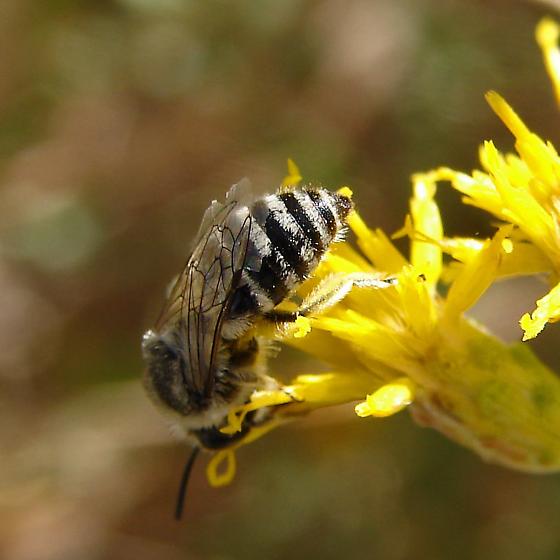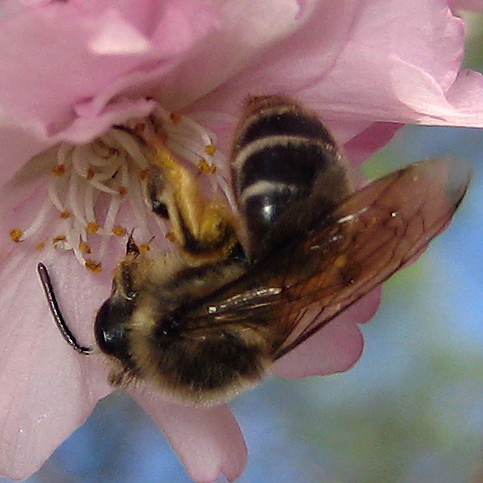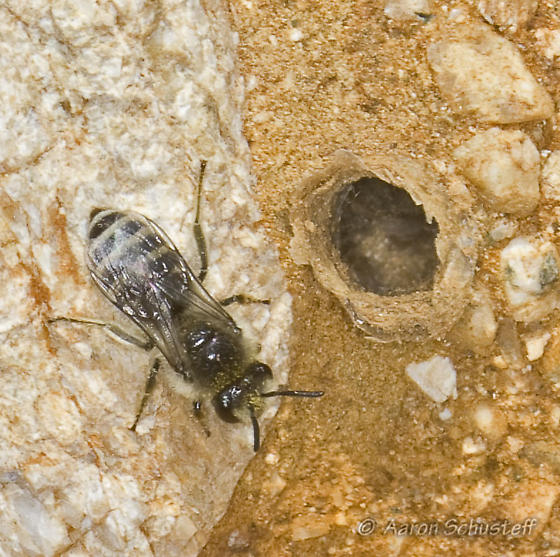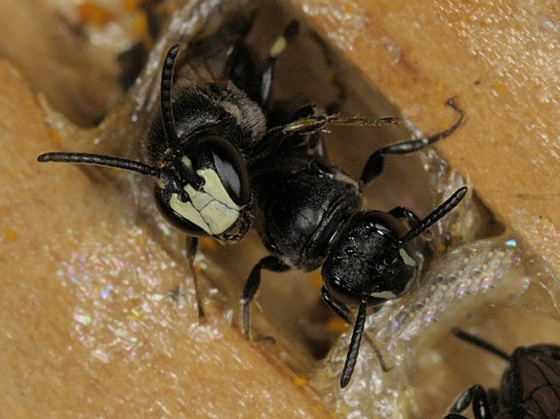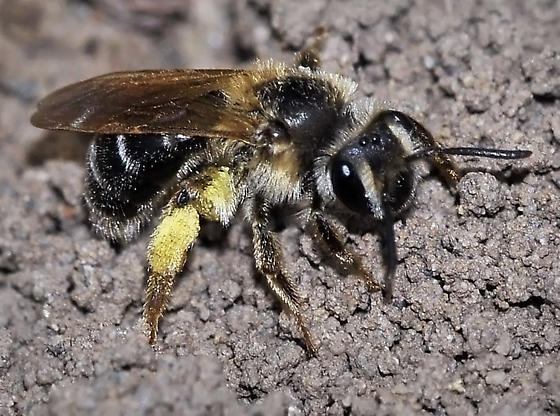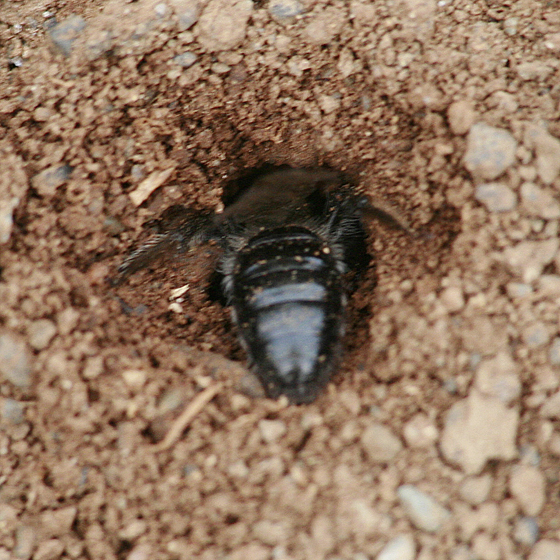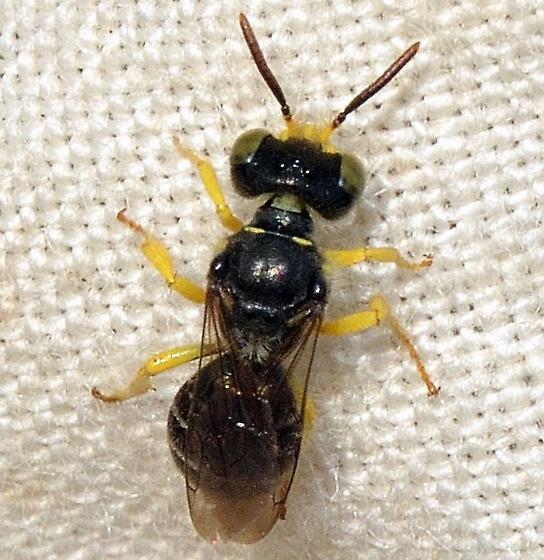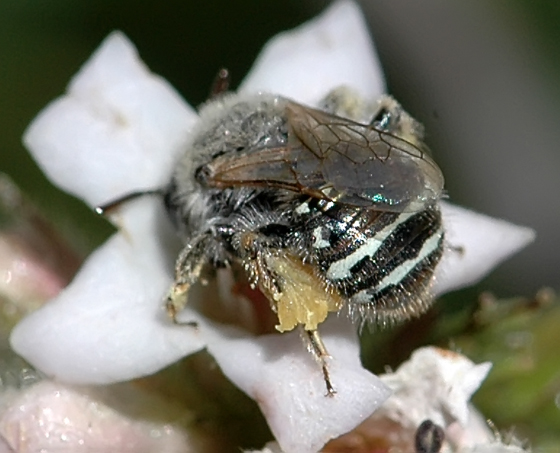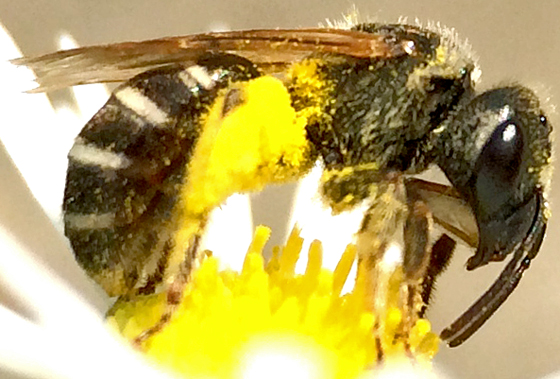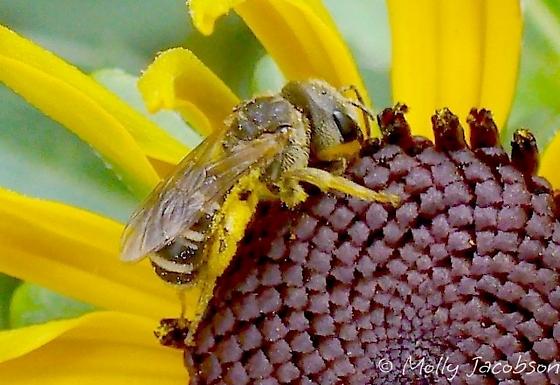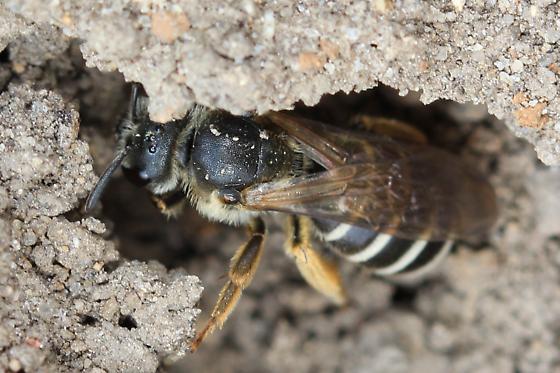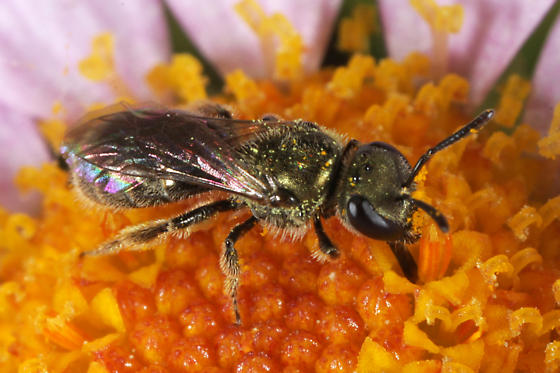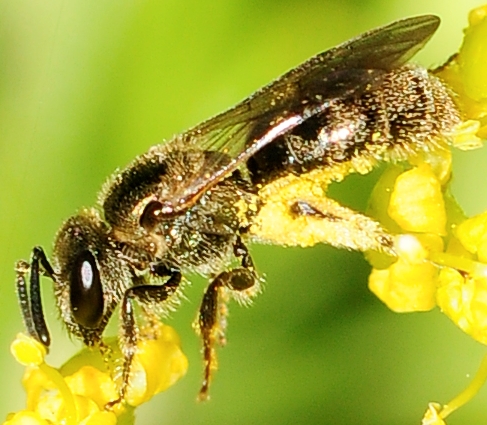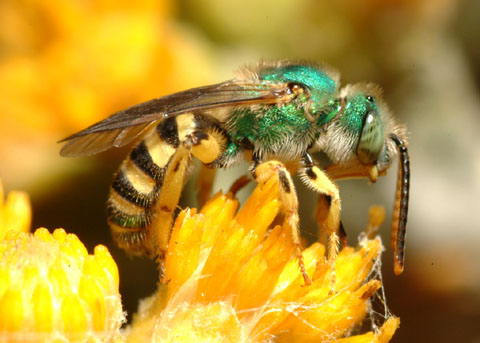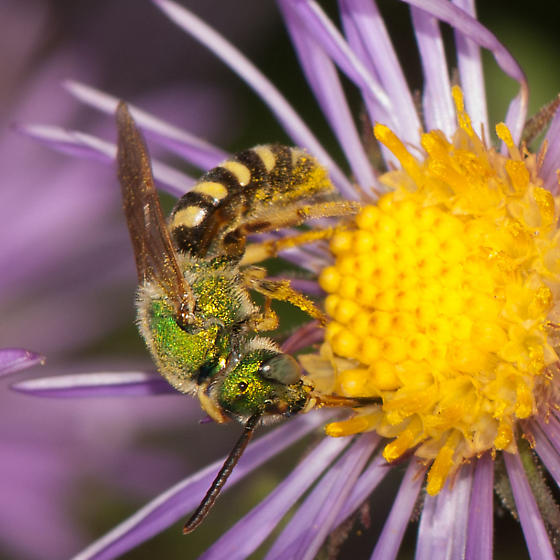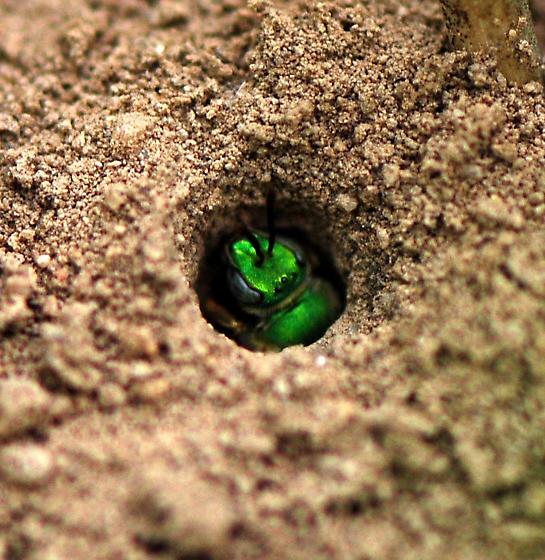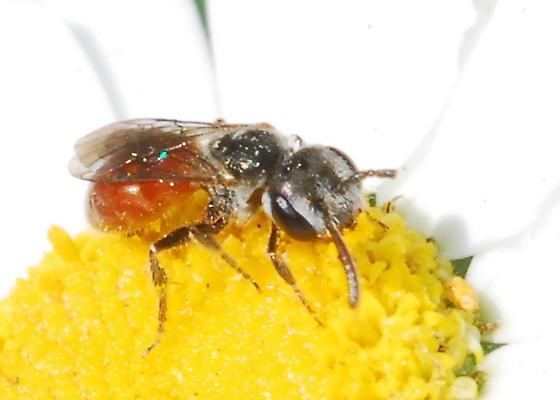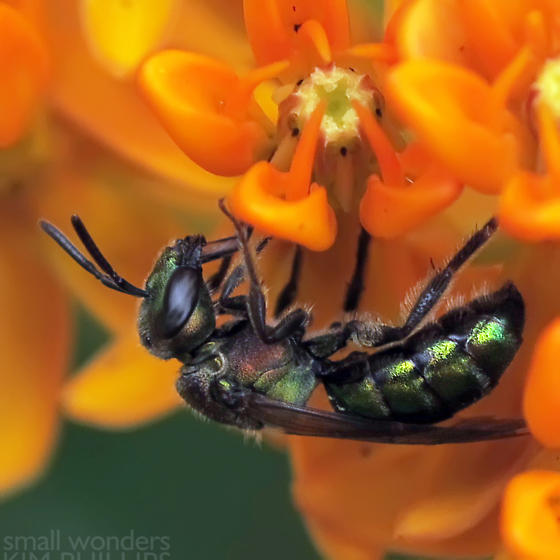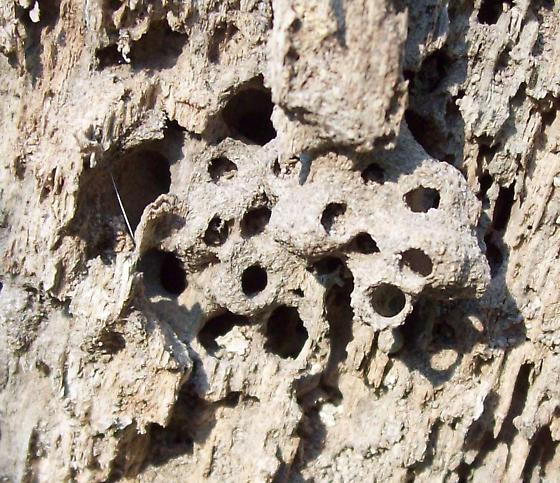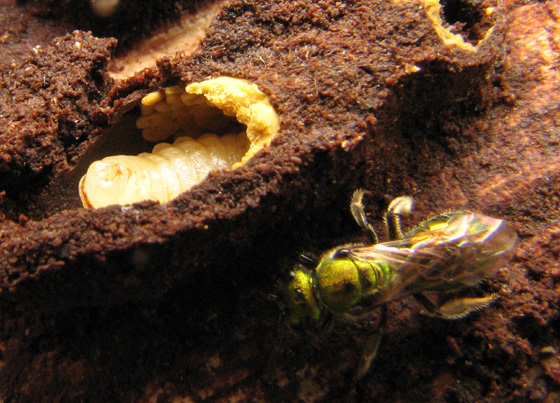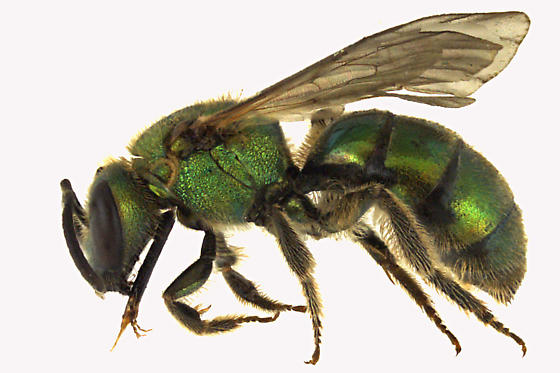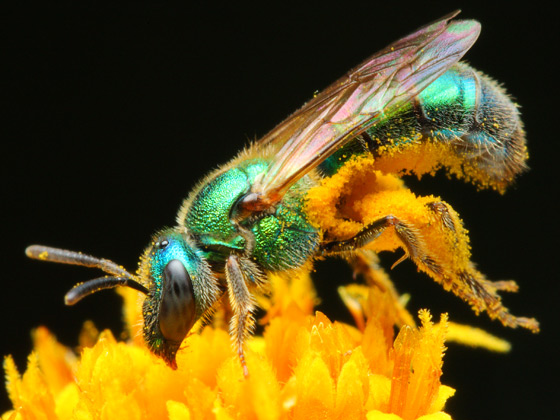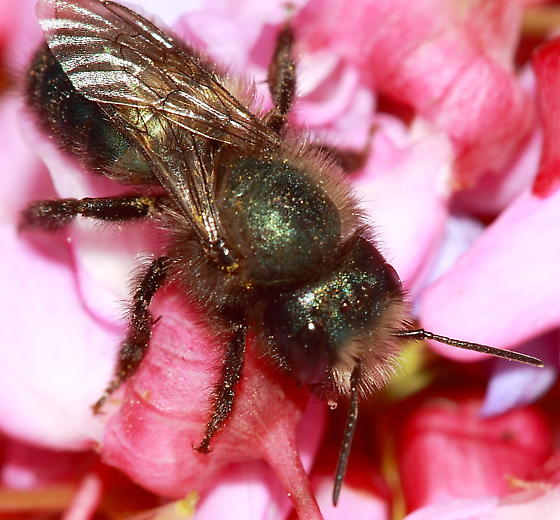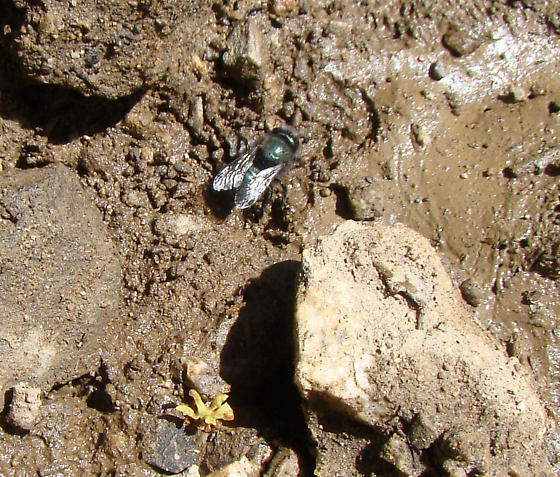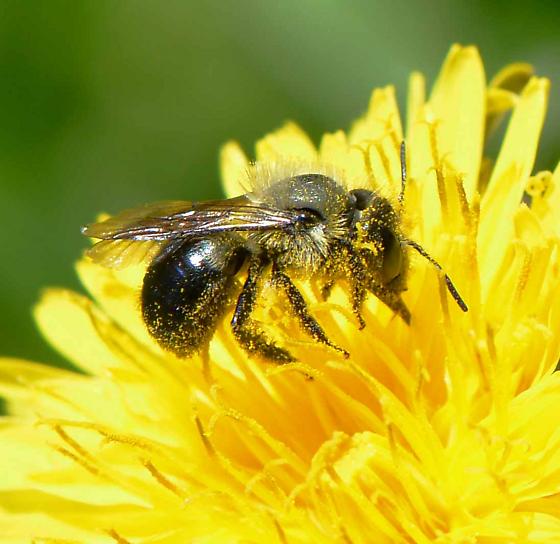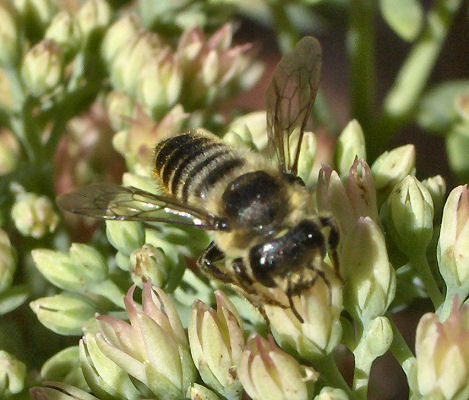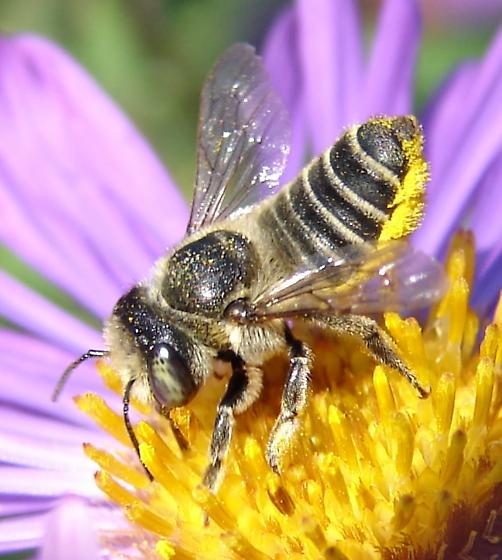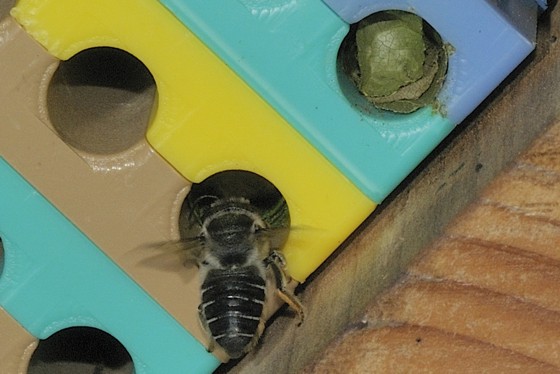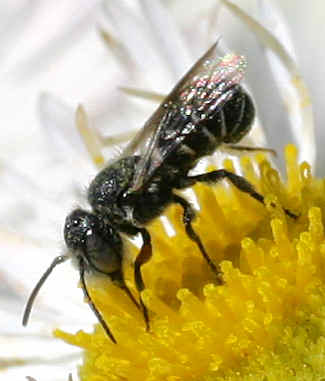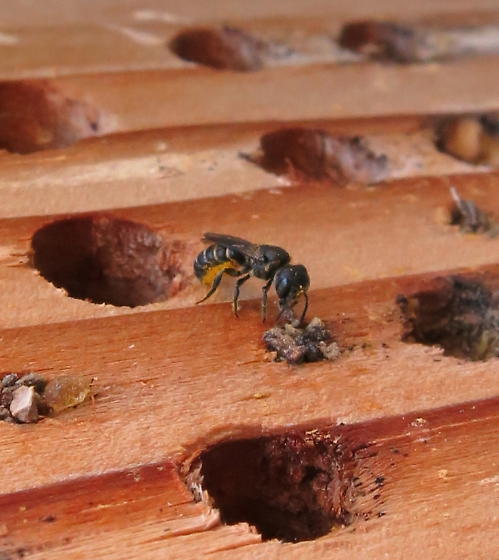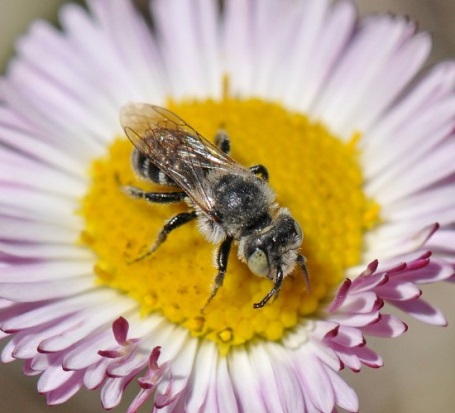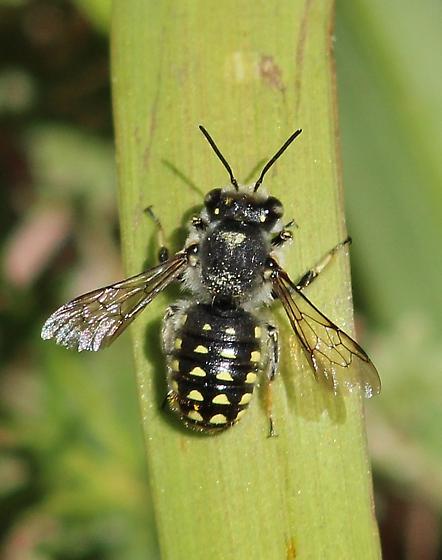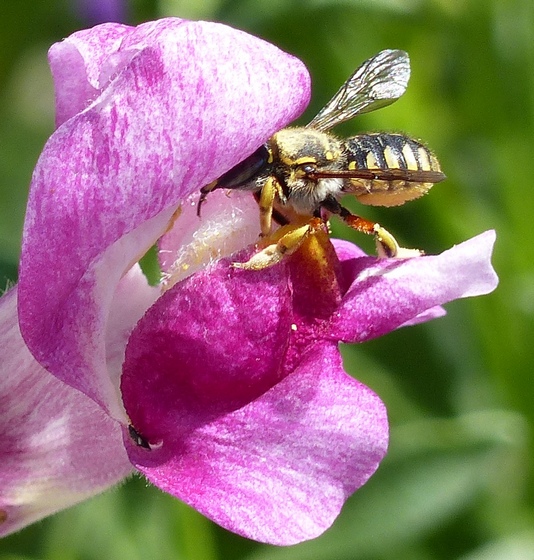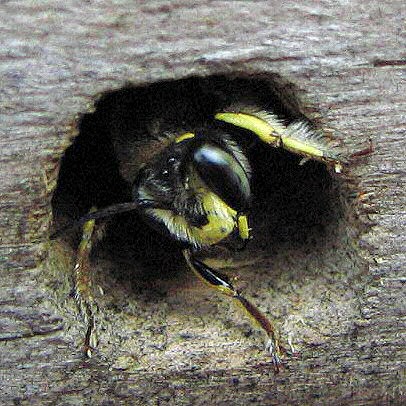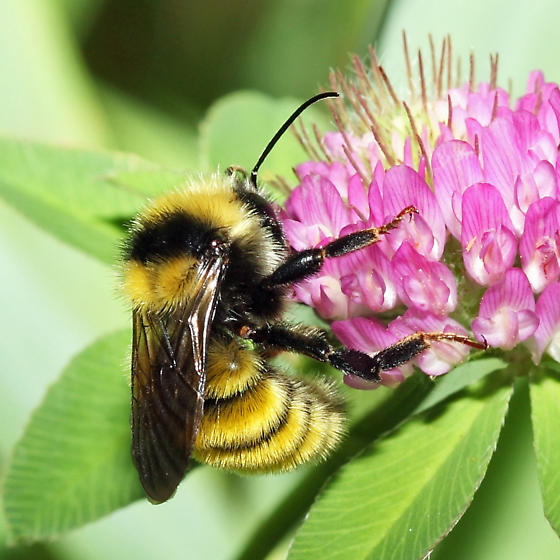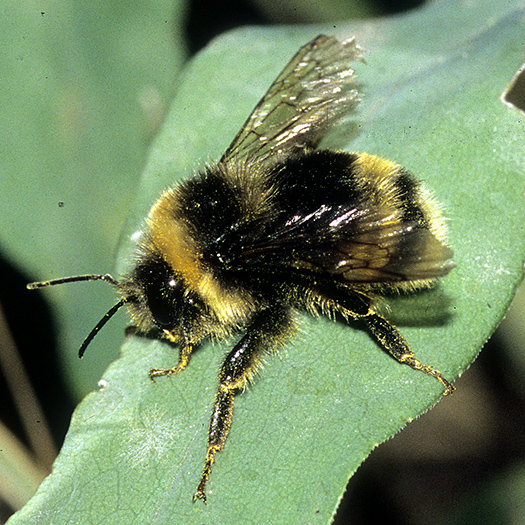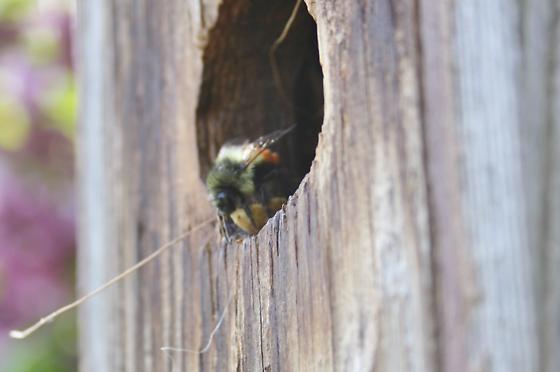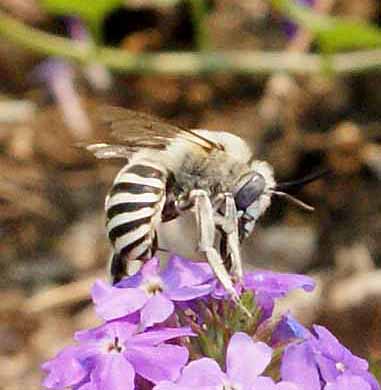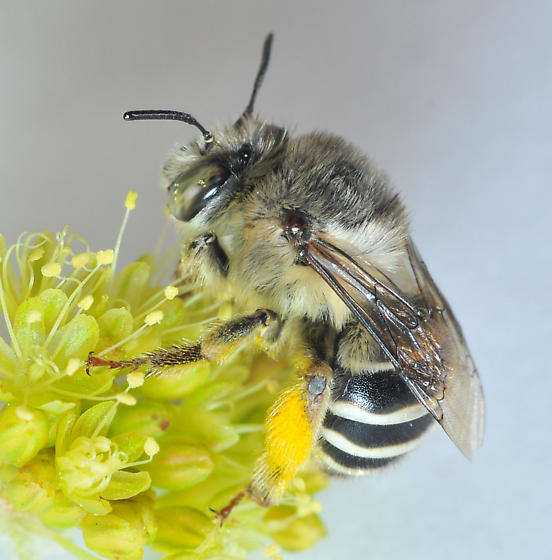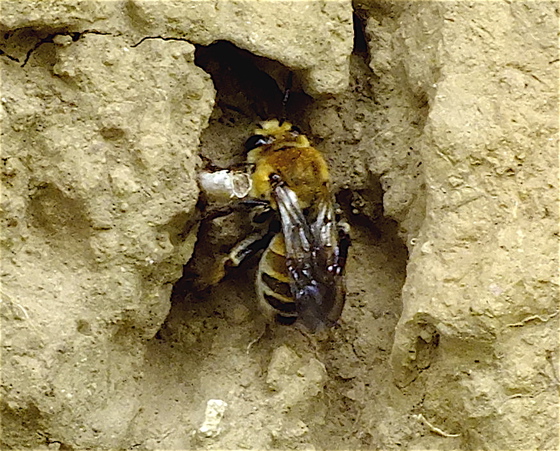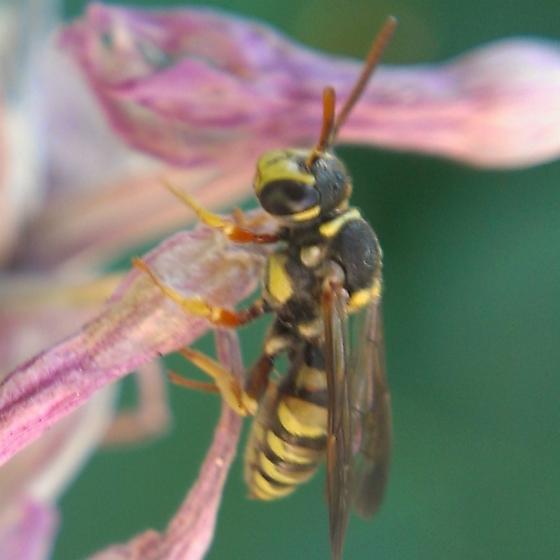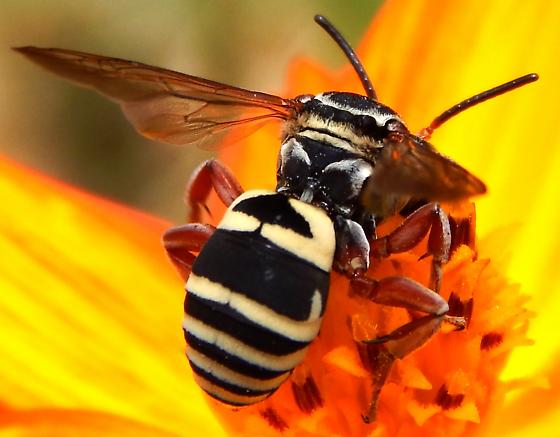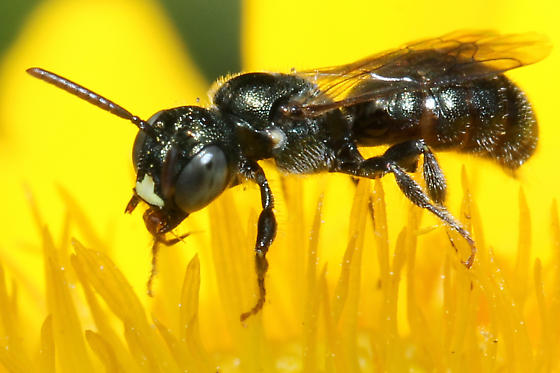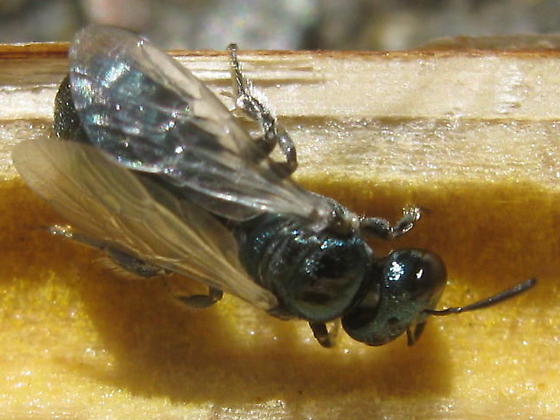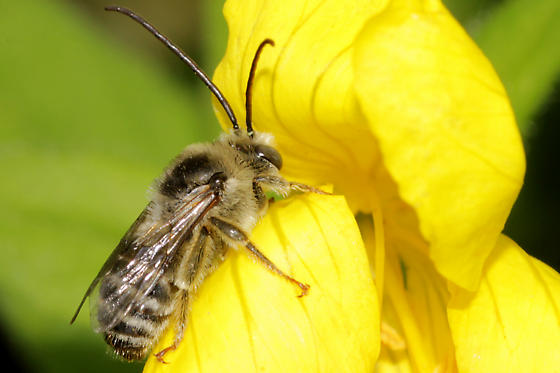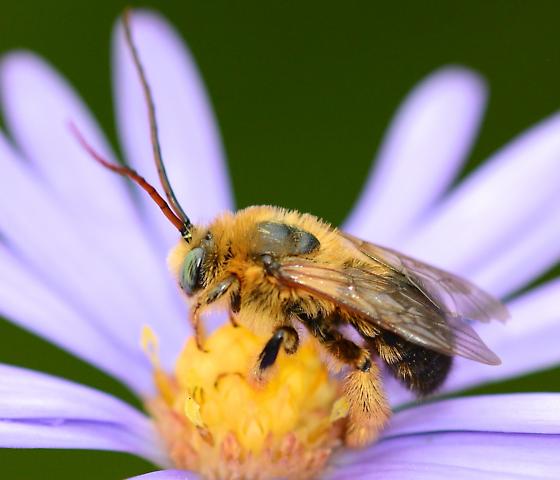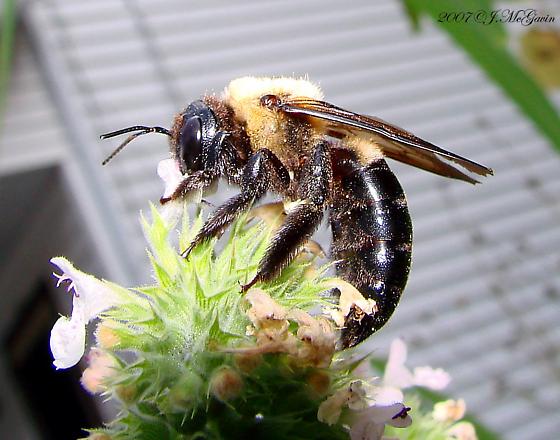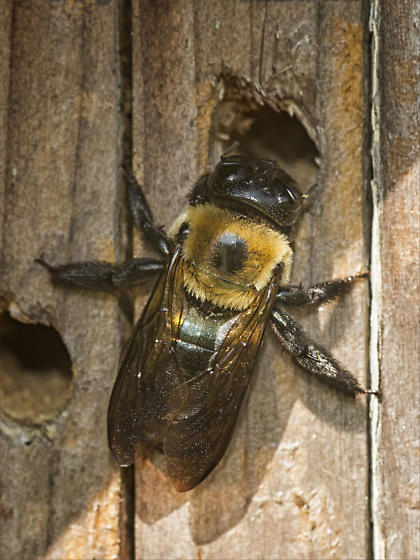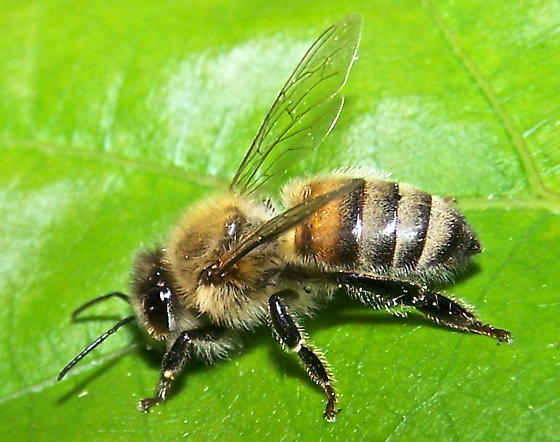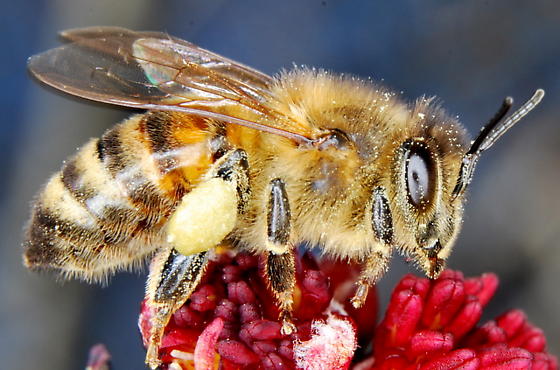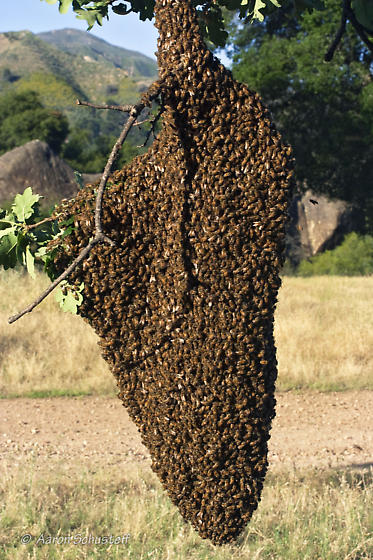On this page are additional materials for the course located at campus extension called Mitigating pollinator decline with IPM. Also, this page contains materials relevant to a Citizen's Science-like project on pollinators. The images on this page are from BugGuide, Iowa State University and the text is from Heather Holm's book. Healther Holm's book on native plants and pollinators is available to purchase at http://www.pollinatorsnativeplants.com/purchase.html
Conserving beneficial insects is everyone's business, from landscapers, to consumers, to state and federal land managers. Listed here are families in the Anthopila (Apoidea). However, there are many species of social and solitary wasps, parasitic wasps, lady beetles, lacewings, dragon flies, mosquitoes, truebugs, and many others that visit flowers for pollen and nectar.
The conservation of beneficial insects, that includes bees, insect predators, parasitic wasps, and butterflies, is an essential part of Integrated Pest management (IPM) programs. IPM promotes multiple tactics to manage pests and to suppress the population size below levels that will damage the plant. IPM tactics include cultural control, sanitation, biological control, using insecticides friendly to beneficial insects, and finally the use of conventional insecticides. IPM recognizes that the few remaining pest insects will support beneficial predators and parasitic wasps. When scouting plants for pest insects, check for populations of both pest and beneficial insects, such as lady beetles and bees. If beneficial insects are present, wait to spray insecticides to see if the beneficial insects control the pest insects or use specific insecticides that only target the pest insect. Do not apply insecticides while plants are in full bloom. If possible avoid beneficial insects by spraying leaves in the evening when bees and lady beetles are not foraging.
There are few systemic insecticides, while there are many systemic herbicides and fungicides. Systemic, neonicotinoid insecticides are the most widely used insecticides in the world, due to their low mammalian toxicity and the ability of the insecticide to move systemically from soil into the entire plant, including pollen and nectar. Application methods include seed treatments, foliar sprays, soil and trunk drenches, and trunk-injections. Flowers that open after being sprayed with contact insecticides do not contain insecticide residue, while toxicity to pests lasts for 1-3 weeks. However, flowers that open after systemic insecticides are sprayed can contain the insecticide residue for many months in both the leaves and pollen and nectar.
There are six neonicotinoid active ingredients, imidacloprid, dinotefuran, thiamethoxam, and clothianidin, of which acetamiprid and thiacloprid are the least toxic to bees. There is another systemic insecticide, fipronil that is used around structures that is also toxic to bees. You will find these active ingredients listed on the insecticide label in small print. The neonicotinoid class of insecticides is highly toxic to bees and kills bees at around 180 ppb in flower nectar or pollen. However, sublethal doses of neonicotinoid insecticide starting around 10 ppb, causes bees to lose navigation and foraging skills. The longevity and amount of the neonicotinoid in the pollen and nectar will depend on application method, concentration applied, and binding capacity of the soil. More research is needed to determine residual levels from different applications.
The use of neonicotinoid insecticides as trunk injections and soil drenches for ash trees is important to slow the spread of the exotic, invasive Emerald Ash Borer and other invasive pests. As bees do not collect ash pollen in quantities, the risk to bee pollinators is low. In contrast, the use of neonicotinoid insecticides on flowering garden plants, shrubs and trees, including linden and basswood trees can kill bees and beneficial insects that utilize the flowers for pollen and nectar. It is wise to avoid using systemic neonicotinoid insecticides on flowering plants that bees visit regularly. Instead use spot treatments of contact insecticides.
ID native bees, scroll down to see pictures and information on 6 families of native bees.
1. Family Colletidae
Common name: Cellophane (Polyester) bees, Colletes spp.
Nest: Ground, often near water, dense aggregations
Nest soil type: Sand, loamy soil, loam, clay loam
Nest lining: Dufour's gland secretion of cellophane, brushed on with glossa
Active: Late spring-summer
Size: Small – medium, 7 – 15mm (0.3 – 0.6 in)
Tongue length: Short, 1 – 3 mm (0.4 – 0.12 in ), two lobed
Color: Black and white banding on abdomen
Appearance: Hairy head and thorax, Heart – shaped face (strongly converging eves), bi-lobed tongue
Pollen collection: Scopae, upper hind legs and thorax
Flight distance:~ 500ft, 150 m
| Adult bee | Carrying pollen | Ground nest |
| Copyright © 2009 Steve Scott, http://bugguide.net/node/view/352502, BugGuide, Iowa State University, Colletes spp., Desert Bee, Coachella Valley Preserve, Riverside County, California, USA, November 1, 2009 |
Copyright © 2013 Aaron Schusteff, http://bugguide.net/node/view/735998, Colletes spp., Montara, San Mateo County, California, USA, June 24, 2012 | Copyright © 2009 Steve Scott, http://bugguide.net/node/view/352502, BugGuide, Iowa State University, Colletes spp., Desert Bee, Coachella Valley Preserve, Riverside County, California, USA, November 1, 2009 |
2. Family Colletidae
Common name: Yellow-faced bee, Hylaeus spp.
Nest: Preexisting cavities: stems or twigs
Nest lining: Cellophane-like material, brushed on with glossa
Active: Late spring – late summer
Size: Small, 5 – 7 mm (0.2 – 0.3 in.)
Tongue length: Short, 1 – 2 mm (0.04 – 0.07 inch)
Color: Black with yellow markings
Appearance: Hairless, bi-lobed tongue
Pollen collection: Crop, No pollen–collecting scopae
| Adult bee | Twig nest |
| Copyright © 2014 Kurt Hennige http://bugguide.net/node/view/977657, BugGuide, Iowa State University, Hylaeus annulatus, Yellow-Faced bee, Bath, Lennox and Addington, Ontario, Canada, July 29, 2014 |
Copyright © 2011 George Cordiner http://bugguide.net/node/view/525485 BugGuide, Iowa State University, Hylaeus annulatus, Yellow-Faced bee, Bowmanville, Durham, Ontario, Canada, May 31, 2011 |
3. Family Adrenidae
Common Name: Mining bees, Andrena spp.
Nest: Ground (sometimes lawns)
Nest soil type: Sand, sandy loam, silt loam
Active Spring: - early fall
Size: Small - medium 7 -15 mm (0.3 - 0.6 in.)
Tongue length: Short, 2 - 4 mm (0.7 - 0.15 in.)
Color: Black
Appearance: Moderately hairy, white to orange hairs, often with bands of hair on abdomen Facial depressions (foveae) between the compound eyes
Pollen collection: Scopae upper hind legs
Flight distance: ~ 500 yards, 450 m
| Adult bee | Carrying pollen | Ground nest |
|
|
Copyright © 2011 iNaturalist, http://bugguide.net/node/view/545690 , BugGuide, Iowa State University, Andrena spp., Mining bees, McClellan Ranch, Cupertino, Santa Clara County, California, USA, |
Copyright © 2010 Libby & Rick Avis, http://bugguide.net/node/view/480126 , BugGuide, Iowa State University, Andrena spp., Mining bees, Port Alberni, Vancouver Island, British Columbia, Canada, April 21, 2009 |
4. Family Adrenidae
Common name: Mining bees, Calliopsis spp.
Nest: Ground
Nest lining: Oil secreted from Dufour’s gland used to waterproof brood cell and cover bee bread
Active: Late spring - early fall
Size: Small - medium 7- 9 mm (0.3 - 0.35 in.)
Color Black, often with yellow or cream markings on the face, legs and thorax
Appearance: Moderately hairy
Pollen collection: Scopae hind legs
| Adult bee | Carrying pollen |
|
Copyright © 2015 Paul A Scharf, http://bugguide.net/node/view/1145329, BugGuide, Iowa State University, Mining bees, Calliopsis andreniformis, Yellow Mountain State Natural Area, 4100', Avery County, North Carolina, USA, June 19, 2015 |
Copyright © 2009 Hartmut Wisch, http://bugguide.net/node/view/353306, BugGuide, Iowa State University,Mt. Williamson Trailhead, off Angeles Crest Hwy.; elev. 2039m, San Gabriel Mountains, Los Angeles County, California, USA |
5. Family Halictidae
Common name: Sweat bees Halicitus spp.
Nest: Ground
Nest Soil Type: Loamy sand, sandy loam
Nest lining: Wax-like substance
Active: Summer
Size: Small - medium, 2 - 6 mm (0.08 - 0.2 in.)
Color: Dark gray, black
Appearance: Pale band hair on outer edge of abdominal segments
| Adult bee | Carrying pollen | Ground nest |
|
Copyright © 2015 Sarah Christopherson, http://bugguide.net/node/view/104122 , BugGuide, Iowa State University, Family Halictidae, Sweat bees Halicitus spp., Prince George's County, Maryland, USA, |
Copyright © 2010 Molly Jacobson http://bugguide.net/node/view/438865, BugGuide, Iowa State University, Family Halictidae, Sweat bees Halicitus spp. Merrimack, Hillsborough County, New Hampshire, US, July 25, 2010 |
Copyright © 2014 J. Gibbs, http://bugguide.net/node/view/909161, BugGuide, Iowa State University,Family Halictidae, Sweat bees Halicitus spp., East Lansing, Ingham County, Michigan, USA,April 13, 2014 |
6. Family Halictidae
Common name: Sweat bees Lasioglossum spp.
Nest: Ground
Nest soil type: Silt loam
Nest lining: Wax-like substance
Active: Early spring - summer
Size: Small - medium 3 - 10 mm (0.1 - 0.4 in.)
Tongue length: Short - medium, 2 -6 mm (0.08 - 0.2 in.)
Color Dull gray, black, metallic
Appearance: Often with pale band hair along the base of abdominal segments or uniformly fuzzy (subgenus Dialictus)
Pollen collection: Scopae hind legs
Flight Distance: 200 yards, 180 m
| Adult | Carrying pollen |
|
Copyright © 2008 Gary McDonald, http://bugguide.net/node/view/194595, BugGuide, Iowa State University, Family Halictidae, Sweat bees Lasioglossum spp., Aromas, San Benito County, California, USA, May 1, 2008
|
Copyright © 2014 Kurt Hennige, http://bugguide.net/node/view/978603, BugGuide, Iowa State University, Family Halictidae, Sweat bees Lasioglossum spp. Bath, Lennox and Addington, Ontario, Canada, July 30, 2014 |
7. Family Halictidae
Common name: Green sweat bees, Agapostemon spp.
Nest: Ground
Nest Soil Type: Sandy loam
Active: Late spring - fall
Size: Small - medium 7 - 15 mm (0.3 - 0.6 in.)
Tongue length: Short, 2 - 6 mm (0.08 - 0.2 in.)
Color: Bright green, blue some species with black and white (yellow) abdomen
Pollen collection: Scopae hind legs
| Adult bee | Carrying pollen | Ground nest |
|
Copyright © 2008 Peter Bryant ,http://bugguide.net/node/view/235260 BugGuide, Iowa State University,Family Halictidae, Green sweat bees, Agapostemon spp., Laguna Beach, Orange County, California, USA, August 27, 2006 |
Copyright © 2013 Betsy Betros ,http://bugguide.net/node/view/876679 BugGuide, Iowa State University,Family Halictidae, Green sweat bees, Agapostemon spp., Kauffman Gardens, Kansas City, Jackson County, Missouri, USA, September 21, 2013 |
Copyright © 2010 Diane Wilson,http://bugguide.net/node/view/412760 , BugGuide, Iowa State University,Family Halictidae, Green sweat bees, Agapostemon spp., Denver, Denver County, Colorado, USA
|
8. Family Halictidae
Common name: Cuckoo bees, Sphecodes spp.
Nest: Cleptoparasite of sweat bees
Active: Late spring - summer
Size: Medium 5 - 15 mm (0.2 - 0.6 in.)
Tongue length: Short, 2 - 3 mm (0.2 - 0.1 in.)
Color: Black, dark red abdomen (female)
Appearance: Sparsely haired, coarsely pitted
Pollen collection: None
| Adult bee | |
|
Copyright © 2007 Ron Hemberger,http://bugguide.net/node/view/101153 , BugGuide, Iowa State University, Family Halictidae, Sphecodes spp., Fullerton Arboretum, Fullerton, Orange County, California, USA, April 1, 2007 |
9. Family Halictidae Augoclorini tribe
Common name: Sweat bees, Augochlora spp.
Nest location: Rotting wood, preexisting cavities
Active: Summer
Size: Small, 5 - 10 mm (0.2 - 0.4 in)
Tongue length: Short, 2 -3 mm (0.08 - 0.1 in)
Color: Bright green or blue-green metallic or brassy
Appearance: Very sparsely haired
Pollen collection: Scopae hind legs
Flight distance: 490 feet, 150 m
| Adult bee | Carrying pollen | Wood | Wood |
|
Copyright © 2014 Kim Phillips,,http://bugguide.net/node/view/898782 , BugGuide, Iowa State University, Family Halictidae Augoclorini tribe, Sweat bees, Augochlora pura, Grand Rapis, Kent County, Michigan, July 4, 2013 |
Copyright © 2013 Heather Holm, http://bugguide.net/node/view/790751 , BugGuide, Iowa State University, Family Halictidae Augoclorini tribe, Sweat bees, Augochlora pura, Minneronka, Hennepin County, Minnesota,USA, June 19, 2013
|
Copyright © 2007 Beatriz Moisset,http://bugguide.net/node/view/428546, BugGuide, Iowa State University, Family Halictidae Augoclorini tribe, Sweat bees, Augochlora pura, Howell, Monmouth County, New Jersey, USA, July 18, 2010 |
Copyright © 2007 Beatriz Moisset, http://bugguide.net/node/view/129557 , BugGuide, Iowa State University,Family Halictidae Augoclorini tribe, Sweat bees, Augochlora pura., Briar Bush Nature Center, Montgomery County, Pennsylvania, USA, July 22, 2007 |
10. Family Halictidae Augoclorini tribe
Common name: Sweat bees, Augochlorella spp.
Nest: Rotting wood, preexisting cavities
Active: Summer
Size: Medium, 4.5 - 8 mm (0.18 - 0.3 in.)
Tongue length: 2 - 3 mm (0.08 -0.1 in.)
Color: Golden-green with coppery or red sheen
Appearance: Sparsely haired
Pollen collection: Scopae back legs
| Adult bee | Carrying pollen | |
|
Copyright © 2014 Richard Migneault, http://bugguide.net/node/view/882823, BugGuide, Iowa State University,Sweat Bee, Augochlorella aurat, Edmundston, Madawaska County, New Brunswick, Canada,June 6, 2013 |
Copyright © 2015 Mike Deep, http://bugguide.net/node/view/1066395 , BugGuide, Iowa State University,Family Halictidae Augoclorini tribe, Sweat bees, Augochlorella spp., Lake Rogers County Park, Hillsborough County, Florida, USA, May 12, 2015 |
|
11. Family Megachilidae
Common name: Mason bees, Osmia spp.
Nest: Preexisting cavities: wood, stems, rock crevices, snail shells, old wasp nests
Nest Divisions: Mud, leaves, sand, gravel, and woodchips
Active: Spring – early summer
Size: Small - medium, 6 - 11 mm (0.2- 0.4 in.)
Tongue length: Medium - long 7 - 9 mm (0.3 - 0.4 in.)
Color: Blue, green, metallic, dull appearing black
Appearance: Moderately hairy, bulky, large head with mandibles
Life history: Are called mason bee because they collect mud to line their burrows in stems, old nests, wood, or rocks
Pollen collection: Abdominal scopae
Flight distance: ~ 300 feet, 91 m
| Adult bee | Gathering mud | Carrying pollen |
|
Copyright © 2009 Sam Houston,http://bugguide.net/node/view/259177 , BugGuide, Iowa State University, Family Megachilidae, Mason bees, Osmia spp., Sand Springs, Osage County, Oklahoma, USA,March 17, 2009 |
Copyright © 2010 Jonathan Wright,http://bugguide.net/node/view/398226 , BugGuide, Iowa State University, Family Megachilidae, Mason bees, Osmia spp., Cow Canyon, Mt. Baldy Village, Los Angeles County, California, USA, May 16, 2010
|
Copyright © 2011 Diane Wilson,http://bugguide.net/node/view/539249 , BugGuide, Iowa State University, Family Megachilidae, Mason bees, Osmia spp., Yeoman Park Campground, White River National Forest, Eagle County, Colorado, USA, July 1, 2011 |
12. Family Megachilidae
Common name: Leafcutter bees, Megachile spp.
Nest: Preexisting cavities: wood, stems ground
Nest divisions: Leaves, petals, resin, and mud
Active: Early - late summer
Size: Medium - large 7 -10 mm (0.2 - 0.4 in.)
Tongue length: Medium- long, 9 - 12mm (0.35 - 0.5 in.)
Color: Dark gray, black
Appearance: Female: Pale hair bands (often), large mandibles, broad hear, flattened or upturned abdomen, tapered
Male: Long hairs on forelegs
Pollen collection: Abdominal scopae
Flight distance: 500 yards, 450 m
Life history: Are called leaf cutter bees as they line their nest with leaves and flowers
| Adult bee | Carrying pollen | Nest |
|
Copyright © 2010 Carol Davis, http://bugguide.net/node/view/451586 , BugGuide, Iowa State University, Family Megachilidae, Leafcutter bees, Megachile spp., Salt Lake, Salt Lake County, Utah, USA,September 5, 2010 |
Copyright © 2005 Steve Scott,http://bugguide.net/node/view/36177 , BugGuide, Iowa State University, Family Megachilidae, Leafcutter bees, Megachile spp., Fairfield, Illinois, USA, Wayne County, Illinois, USA, September 20, 2005 |
Copyright © 2010 George Cordiner,http://bugguide.net/node/view/419514 , BugGuide, Iowa State University, Family Megachilidae, Leafcutter bees, Megachile spp., Bowmanville, Durham, Ontario, Canada, June 29, 2010 |
13. Family Megachilidae
Common name: Small resin bees, Heriades spp.
Nest: Preexisting cavities: wood, stems
Nest Divisions: Resin, sealed with sand, wood fibers, plant fragments
Active: Late spring - summer
Size: Small, 5 - 7 mm (0.15 - 0.28 in.)
Tongue length: Short
Color: Black, pale abdominal bands
Appearance: Concave abdomen, pitted surface, short hair
Pollen collection: Abdominal scopae
| Adult bee | Carying pollen | Nest |
|
Copyright © 2008 Kurt Schaefer,http://bugguide.net/node/view/185936 , BugGuide, Iowa State University, Family Megachilidae, Small resin bees, Heriades spp., Texhoma, Texas County, Oklahoma, USA, May 28, 2008 |
|
Copyright © 2014 Paul Heiple,http://bugguide.net/node/view/890484 , BugGuide, Iowa State University, Family Megachilidae, Small resin bees, Heriades spp., Portola Valley , San Mateo County, California, USA, July 1, 2013 |
14. Family Megachilidae
Common name: Mason bees Hoplitis spp.
Nest: Preexisting cavities: pithy stems, wood, old nests in soil or mud nests
Nest divisions: Chewed leaves, pebbles sand, clay, wood fiber
Active: Spring - summer
Size: Small to medium 5 - 15 mm (0. - 0.6 in.)
Color: Black or metallic (western species)
Appearance: Slender, robust, hairy face
Pollen collection: Abdominal scopae
| Adult bee | ||
|
Copyright © 2010 Dave Beaudette, http://bugguide.net/node/view/390304 , BugGuide, Iowa State University, Family Megachilidae, Mason bees Hoplitis spp., Fort Huachuca, Cochise County, Arizona, USA, April 27, 2010 |
15. Family Megachilidae
Common name: Cuckoo bees, Coelioxys spp.
Nest: Cleptoparasite of leafcutter bees, lays eggs in other bees' nests.
Active: Early summer – late fall
Size: Medium 12 mm (0.5 in.)
Tongue length: Short, 4 mm (0.15 in.)
Color: Dark gray, black
Appearance: Hair on eyes Female: narrow, tapered abdomen Male: short spines, last abdominal segment
Pollen collection: None, no nest provisioned
| Ault bee | ||
|
|
16. Family Megachilidae
Common name: Carder bees, Anthidium spp.
Nest: Preexisting cavities, soil, wood, stems
Nest Divisions: Plant hairs and trichomes, resin
Nest Closure: Wood fibers
Active: Late spring - summer
Size: Small - medium, 7 - 15 mm (03 - 0.8 in.)
Tongue Length: Short, 4 mm (0.15 in.)
Color: Dark gray, black with yellow/white bands
Pollen collection: Abdominal scopae
| Adult bee | Carrying pollen | Nest |
|
Copyright © 2014 t. stone http://bugguide.net/node/view/914957 , BugGuide, Iowa State University, Family Megachilidae, Carder bees, Anthidium spp., Superior, Pinal County, Arizona, USA, |
Copyright © 2015 Rich Schilk,http://bugguide.net/node/view/1124487 , BugGuide, Iowa State University, Family Megachilidae, Carder bees, Anthidium spp., Salt Lake City, Salt Lake County, Utah, USA, June 30, 2015 |
Copyright © 2009 Don Patterson,http://bugguide.net/node/view/336847 , BugGuide, Iowa State University, Family Megachilidae, Carder bees, Anthidium spp., Stratford, Fairfield County, Connecticut, USA, September 23, 2009 |
17. Family Apidae
Common name: Bumble bees Bombus spp.
Nest: Colony (eusocial)
Nest Location: Rodent holes, leaf piles, ground
Nest Materials: Wax (nectar pots) leaves (insulation)
Active: Spring - late fall
Size: Medium - large 10 - 23 mm (0.4 - 0.9 in.)
Tongue Length: Medium – long, 4 - 16 mm (0.15 - 0.6 in.)
Color Black, yellow, white or orange hair, black body
Appearance: Stout, furry, robust, completely hairy
Pollen collection: Pollen baskets on hind legs (corbiculae)
Flight distance: ~ 1 mile, 1.6 km
| Adult bee | Carrying pollen | Nest |
|
Copyright © 2015 tom murray,http://bugguide.net/node/view/1113022 , BugGuide, Iowa State University, Family Apidae, Bumble bees Bombus spp., Middlebury, Addison County, Vermont, USA, July 29, 2015
|
Copyright © 2013 Lynn Monroe,http://bugguide.net/node/view/747276 , BugGuide, Iowa State University, Family Apidae, Bumble bees Bombus spp., 6 miles NW Lyons, Boulder County, Colorado, USA, August 21, 2006
|
Copyright © 2014 Iris,http://bugguide.net/node/view/913565 , BugGuide, Iowa State University, Family Apidae, Bumble bees Bombus spp., Surrey, GVRD, British Columbia, Canada, April 26, 2014
|
18. Family Apidae
Common name: Digger bees, Anthophora spp.
Nest: Ground
Nest Soil Type: Loam, sandy clay loam
Nest Lining: Oil
Active: Spring - summer
Size: Medium - large, 9 - 15 mm (0.35 - 0.6 in.)
Tongue Length: Medium - long, 8 - 21 mm (0.3 - 0.8 in)
Color: Black, pale bands, often yellow markings on face, especially males
Appearance: Hairy, robust
Pollen Collection: Long scopae hind legs
| Adult bee | Carrying pollen | Nest |
|
Copyright © 2009 Diane Wilson, http://bugguide.net/node/view/328788 , BugGuide, Iowa State University, Family Apidae, Digger bees, Anthophora spp., Arvada, Jefferson County, Colorado, USA, |
Copyright © 2012 Hartmut Wisch,http://bugguide.net/node/view/639900 , BugGuide, Iowa State University, Family Apidae, Digger bees, Anthophora spp., Residence near Rose Bowl, Pasadena, Los Angeles County, California, USA, May 10, 2012 |
Copyright © 2013 Loren & Babs Padelford,http://bugguide.net/node/view/802094 , BugGuide, Iowa State University, Family Apidae, Digger bees, Anthophora spp., Hitchcock Nature Area, Crescent, Pottawattamie County, Iowa, USA, July 5, 2013 |
19. Family Apidae
Common name: Cuckoo Bees, Namada spp.
Nest: Cleptoparasite of ground-nesting bees, lays eggs in other bees' nests.
Active: Early spring -summer
Size: Small -medium, 2 -15 mm (0.1 - 0.6 in
Tongue Length: Medium, 4 - 5 mm (0.15 - 0.2 in )
Color: Black, red, yellow (white) markings
Appearance: Sparsely hairy, thick antennae, wasp-like
Pollen Collection: None
| Adult bee | ||
|
Copyright © 2015 Susan Hare, http://bugguide.net/node/view/1145088 , BugGuide, Iowa State University, Family Apidae, Cuckoo Bees, Namada spp., San Jose, Santa Clara County, California, USA,September 12, 2015
|
20. Family Apidae
Common name: Cuckoo Bees, Treiepeolus spp.
Nest: Cleptoparasite of digger bees and Andredids, parassite, lays eggs in other bees' nests.
Active: Summer
Size: Medium, 3 - 15 mm (0.1 - 0.2 in)
Tongue Length: Medium, 4 - 5 mm (0.1 – 0.2 in)
Color Black with yellow or white markings
Appearance: Very short hair, appearing hairless
Pollen Collection: None
| Adult bee | ||
|
Copyright © 2015 Salvador Vitanza, http://bugguide.net/node/view/1103267 , BugGuide, Iowa State University, Family Apidae, Cuckoo Bees, Treiepeolus spp., El Paso, El Paso County, Texas, USA, July 16, 2015 |
21. Family Apidae
Common name: Small Carpenter Bees, Ceratina spp.
Nest: Pithy stems, wood
Vertical or angled nest orientation
Nest Divisions: Pith and saliva
Active: Early spring - summer
Size: Small - medium, 3 - 15 mm (0.1 - 0.6 in)
Tongue Length: Medium, 5 - 9 mm (0.2 - 0.35 in)
Color: Blue, black, green, metallic
Appearance: Cylindrical abdomen, sparsely haired, shiny, often white (or yellow) patch on face
Pollen Collection: Scopae hind legs
Flight Distance ~ 200 yd, 180 m
| Adult bee | Wood nest | |
|
Copyright © 2015 H. Go, http://bugguide.net/node/view/1077027 , BugGuide, Iowa State University, Family Apidae, Small Carpenter Bees, Ceratina spp., Clifton, Passaic County, New Jersey, USA, May 31, 2015
|
Copyright © 2012 Pam Phillips, http://bugguide.net/node/view/682050 , BugGuide, Iowa State University, Family Apidae, Small Carpenter Bees, Ceratina spp., Watertown, Middlesex County, Massachusetts, USA, July 30, 2012 |
22. Family Apidae
Common name: Long-horned Bees, Melissodes spp.
Nest: Ground
Nest Lining: Wax-like substance
Active: Mid-summer- fall
Size: Small – medium, 7 - 18 mm (0.3 - 0.7 in)
Tongue Length: Medium - long
Appearance: Robust and hairy, often bands on abdomen in the middle of the abdominal segments Males: long antennae
Pollen Collection: long scopae hind legs
| Adult bee | Carrying pollen | |
|
Copyright © 2014 H. Go, http://bugguide.net/node/view/946764 , BugGuide, Iowa State University, Family Apidae, Long-horned Bees, Melissodes spp., Clifton, Passaic County, New Jersey, USA, June 24, 2014 |
Copyright © 2015 Giff Beaton, http://bugguide.net/node/view/1149847 , BugGuide, Iowa State University, Family Apidae, Long-horned Bees, Melissodes spp., Chattahoochee Nature Center, Fulton County, Georgia, USA, October 2, 2015 |
23. Family Apidae
Common name: Large Carpenter Bees Xylocopa spp.
Nest: Excavated with mandibles in wood and plant stems
Nest Lining: Sawdust (plant stems)
Active: Mid-summer - fall
Size: Large13- 30 mm (0.5 - 1.25 in)
Tongue length: Medium - long
Color: Black with yellow hairs, bumble bee-like
Appearance: Robust, hairy thorax, shiny black abdomen
Pollen Collection: Scopae hind legs
Flight Distance: ~ 1 mile, 1.6 km
| Adult bee | Wood nest | |
|
Copyright © 2007 Jo Ann Poe-McGavin, http://bugguide.net/node/view/136107 , BugGuide, Iowa State University, Family Apidae, Large Carpenter Bees Xylocopa spp., Jim Thorpe, Carbon County, Pennsylvania, USA, August 12, 2007 |
Copyright © 2010 T. Gilliam, http://bugguide.net/node/view/375647 , BugGuide, Iowa State University, Family Apidae, Large Carpenter Bees Xylocopa spp.,County, North Carolina, USA, March 6, 2010 |
24. Family Apidae
Common name: Honey Bees, Apis mellifera
Nest: Social, colony
Nest Location: (besides man-made hives)
Tree cavities, tree limbs or branches
Nest Materials: Wax hexagonal cells
Active: Early spring - late fall
Size: Medium, 10-15 mm (0.4 - 0.6 in)
Tongue Length (Worker): 5 - 8 mm (0.2 -0.3 in)
Color: Black with golden hairs
Appearance: Moderately hairy, long abdomen with black or gold stripes, hairy eyes
Pollen Collection: Pollen baskets hind legs (corbiculae)
Flight Distance ~ 2 miles, 3.2 km
| Adult bee | Carrying pollen | Nest |
|
Copyright © 2011 metriopte, http://bugguide.net/node/view/602695, BugGuide, Iowa State University, Family Apidae, Honey Bees, Apis mellifera, Kennebunk, York County, Maine, USA, June 6, 2011 |
Copyright © 2010 T. Gilliam, http://bugguide.net/node/view/375647, BugGuide, Iowa State University, Family Apidae, Honey Bees, Apis mellifera, Gates, Gates County, North Carolina, USA March 6, 2010 |
Copyright 2014 Aaron Schusteff, http://bugguide.net/node/view/891837, Feral Honey Bee Swarm,
the Indians, Los Padres National Forest, Monterey County, California, USA, June 15, 2011 |
Dr. Vera Krischik, Associate Professor and Extension Specialist, University of Minnesota, [email protected], performs research and extension on landscape, nursery and greenhouse crops, nontarget effects of insecticides, and IPM
